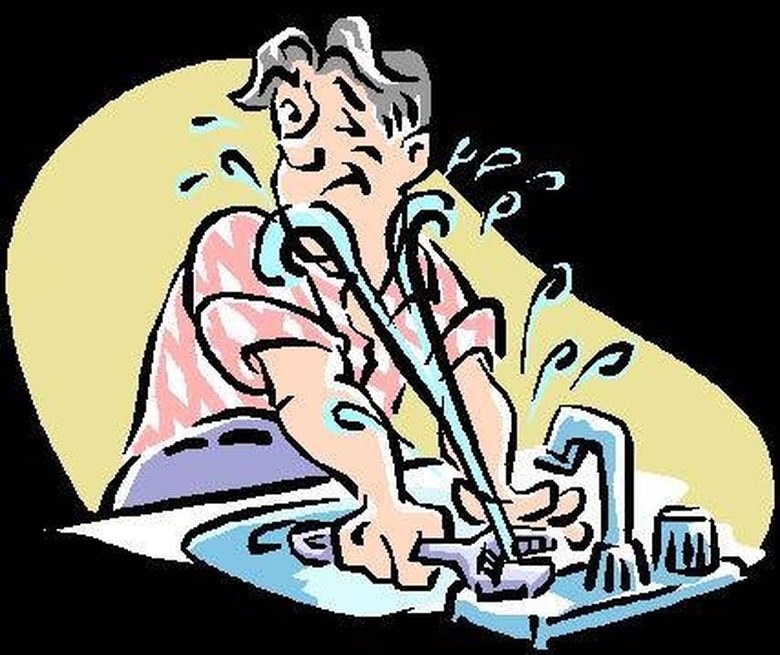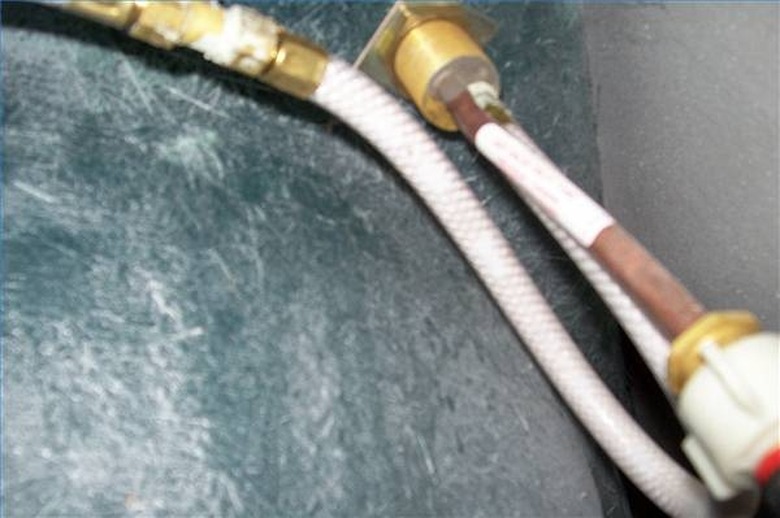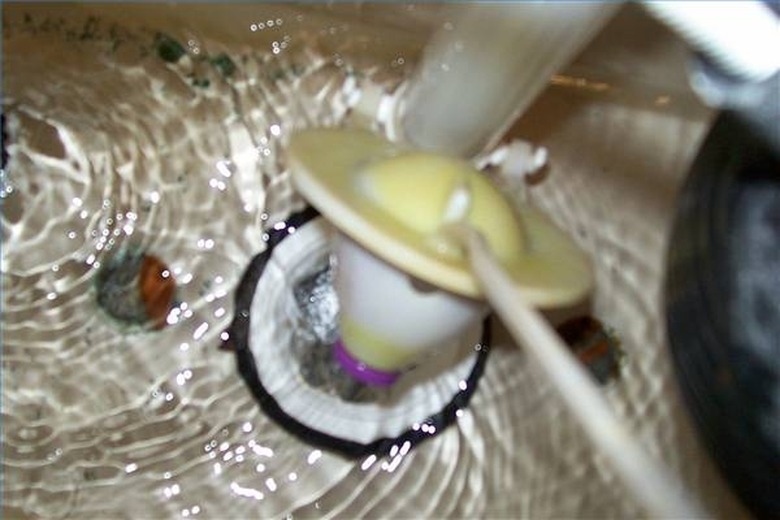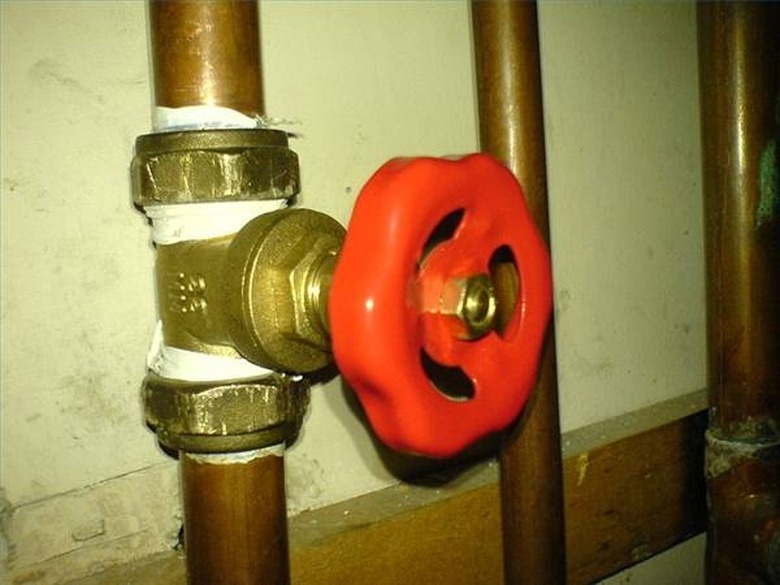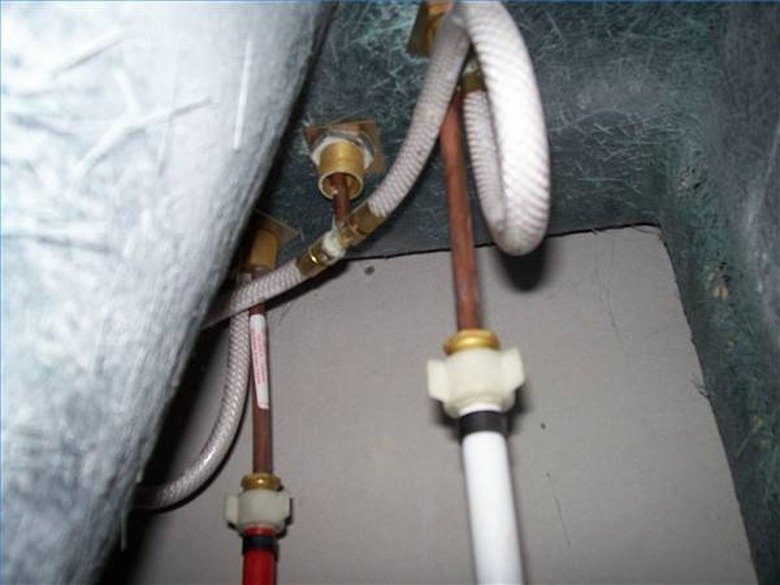How To Stop Water Pipes From Singing
Things Needed
-
Radiator key
-
Basin
-
Plumbing wrench
-
Teflon tape
-
Vinegar
-
Toilet parts
-
Faucet cartridges or rubber washers
Tip
When in doubt, have a plumber check your pipes for problems. You can always watch closely and ask lots of questions to get your money's worth.
Warning
Banging pipes are not musical and are usually caused by pipes that need to be secured to keep them from moving when water flows through them.
Singing pipes are not pleasant music. They incite panic in new homeowners and resignation in experienced do-it-yourselfers. There are a number of reasons for singing pipes, depending on your definition of "singing," but almost all concern pipes that carry hot water. Since water (and pipes) can carry sound over long distances, your first job is to track back through the house's plumbing systems to identify where the sound originates.
Step 1
Check your heating system if you have radiators or a hydronic system. Often, old systems get air in the pipes that travel throughout the house, and it whistles as it travels up through the valves on each radiator or baseboard. Since air rises, ridding the system is a fairly simple matter of "bleeding" radiators. Hold a basin under the valve and open it slowly ("keys" are available at most antique malls and traditional hardware stores) and let air escape until water begins to run out. Hydronic systems seldom need bleeding but if the "reserve tank" contains air, it will moan through the system. A plumber should top off the reserve tank.
Step 2
Listen for moans and squeaks in bathroom or kitchen pipes. They may be due to worn, sediment-encrusted or loose pressure-reducing valves. The pressure-reducing valve may be part of a single-handle cartridge or where the hot water line is connected to the hot water faucet feed. Clean out the valve and replace washers if they are worn. In a single-faucet feed, simply replace the faucet cartridge. Use a vinegar soak and a toothbrush for sediment removal.
Step 3
Inspect the flapper in the toilet assembly for leaks if your toilet appears to be the source of some "chattering" whistles. Drop a little food coloring in the tank and look for any coloration in the bowl. If the flapper's old or brittle, you may have a leak that can make noise, cause the toilet to run periodically and waste water. Replacing the flapper (or the entire assembly) is a simple, inexpensive project.
Step 4
Look to your main pressure-reducing valve located near where the municipal water supply enters your house, if your concert seems to be a lower-floor phenomenon. Check the water pressure at this valve with a water pressure gauge (available at hardware stores). If it is not 80 psi (pounds per square inch), adjust the water pressure valve on the main supply by slowly turning the control screw on the top to increase or decrease the pressure, measuring as you go. If you don't have a pressure-reducing valve on your main water line, have a plumber install one and show you how to adjust it.
Step 5
Find the air chamber next to a hot or cold water supply in the shower or tub. These look like long, upright metal balloons, just a bit wider than the pipe. They are most often placed in the walls as the water supply turns to come out to the faucets. If they fill up with water, air whistles through the pipes. The chambers can be reestablished by turning on all of the faucets and turning off the main water supply until the system has drained. Close the faucets and turn on the main water supply. Then open the faucets gradually from the bottom of the system up to the top floor until all of the air has escaped the pipes.
